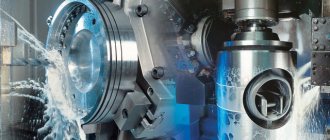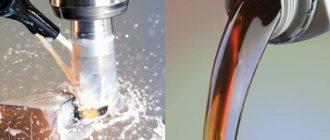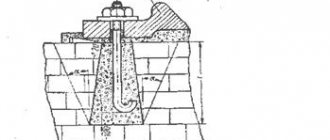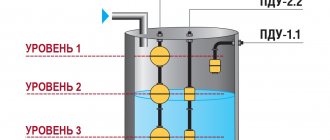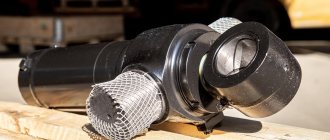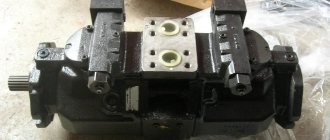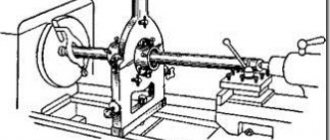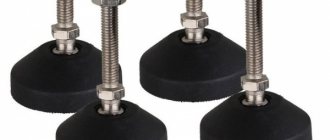TECHNOSOZH LLC is a fast-growing company that produces patented, high-tech coolants and release emulsols for formwork and concrete forms, with a developed production and dealer base.
Our mission is to raise cutting fluids and emulsols produced in Russia to a fundamentally new level, to fill the domestic market with high-quality, inexpensive and effective lubricants that are not inferior to Blaser Blasocut, Castrol, Mobil, Castrol, Fuchs, Houghton, etc.
The quality of TECHNOSOZH products is confirmed by the expert opinion of the Ministry of Defense of the Russian Federation. Sinapol coolant is produced jointly with the Institute of Organoelement Compounds of the Russian Academy of Sciences (Institute of Organoelement Compounds named after Nesmeyanov, Russian Academy of Sciences) to respond to the requests of any consumer.
What is coolant?
Cutting fluid or coolant for short is the general name of liquids intended for cooling and lubrication of working tools and workpieces when processing metal, alloys, plastics, stone and other materials. Cutting fluids are usually supplied ready-made or as a concentrate. Coolant concentrate allows you to obtain diluted coolant, the properties of which can be adjusted by changing the concentration.
Vegetable, mineral, synthetic oils, solutions of water-soluble monomers and polymers, soap emulsions, and emulsions based on mineral oils are most often used as the base of the cutting fluid. Typically, coolant consists of several components, each of which is responsible for certain properties of the finished product. The base of the cutting fluid provides the lubricating properties of the coolant. Water, if it is part of the coolant, ensures cooling of the tool and part. Special components give the coolant other necessary properties, such as bactericidal, anti-friction, stabilizing, anti-foam, anti-corrosion and others. Emulsion cutting fluid concentrates usually contain such an important component as an emulsifier. It allows you to create a stable oil-water emulsion that does not separate for a long time.
Most often, coolant is of the following types:
- oil coolants,
- semi-synthetic coolant,
- synthetic coolants.
The main component of oil coolants is mineral oil. Oil cutting fluids for metalworking have very good lubricating properties, but have a weak cooling effect.
Semi-synthetic cutting fluids are most often concentrates that, when diluted with water, form stable oil-in-water emulsions. Semi-synthetic cutting fluids in the form of an emulsion have good lubricating and cooling properties.
Synthetic cutting fluids contain organic synthesis products as a base. These cutting fluids do not contain mineral oils. The performance properties of synthetic cutting fluids depend on the component composition and form of application of the cutting fluid (usually in the form of an emulsion).
Introduction
Water-miscible coolants are very difficult to use. They rot, foam, and cause irritation among staff. However, if you follow the operating rules, you can avoid all of the above problems and increase the service life of the coolant. And here's how:
Let's start our article with a short historical excursion. In the 15th century, craftsmen made weapon barrels using simple hand-operated lathes and drilling machines. Demands for metal products grew, factories were built all over the world, but they used low-productivity manual labor. To produce large quantities of goods, factories lacked high-performance, precision metalworking machines. Thus began the era of development of this industry.
The first coolant was water; it cooled well, but its lubricity was low and it did not protect against corrosion. Since then, people began to think about how to impart the desired properties to coolant.
The coolant must perform three main functions:
1. Lubricate, reducing friction between the tool, the workpiece and the chips.
2. Cool the heating tool, chips and workpiece.
3. Wash away chips from the cutting area.
Of course, the coolant must be safe to use, because a person comes into direct contact with it.
Where is coolant used? Coolant functions
During metal processing, a large amount of thermal energy is usually released. In this case, the workpiece and the processing tool can heat up to high temperatures, which negatively affect both the workpiece and the tool. The release of thermal energy leads to rapid overheating in the processing area, and as a result to wear and failure of the working tool and a decrease in the quality of the processed surface. The use of cutting fluids (coolants) helps reduce friction during metal processing, and, consequently, lower the temperature of the workpiece and tool.
Cutting fluid (coolant) is a liquid composition that is used when processing various materials, allowing to reduce the load and temperature effect on the tool and on the material being processed.
Coolant can be used in the process of turning, drilling, rolling, stamping, milling, cutting, abrasive processing of various metals, alloys, cast iron, non-ferrous metals, as well as various non-metallic materials.
The functions of coolant during operation are complex and varied. This is not only a lubrication and cooling function. These are also the functions of grinding and removing chips, reducing loads on tools and equipment, protecting equipment from corrosion, reducing the likelihood of scuffing and damage to the surfaces of workpieces and tools, increasing the speed of material processing, and others.
Areas of application of different coolants
The main functions of coolant are to cool and lubricate. Modern products from this category often do much more, but first we will talk about their main purpose.
How and where to use oil coolants
They have proven themselves in difficult operating conditions on metal-cutting equipment, where increased depth of cut at moderate speeds is required. They are often used for honing, reaming and drilling. Experts recommend using them where it is not technically possible to work with water-miscible compounds. Oil-based products are used to lubricate the surfaces of metal workpieces made of bronze, copper and brass, when working with carbon steels and cast iron.
Differences in the use of water-soluble cutting fluids
Cooling properties determine the use of water-based coolants. They have proven themselves where the tool operates at high speed, gets hot and requires effective cooling. The same liquid in different concentrations can be used in different operating modes: in low concentration during roughing, and in high concentration during finishing. The minimum setting is suitable for most sanding operations. Exact recommendations can be found in the technical specifications developed by the manufacturer.
Types and characteristics of coolant
The vast majority of cutting fluids (cutting fluids) are of the following types: oil-based cutting fluids and water-miscible cutting fluids.
Oil coolants are compounds whose main component is a base mineral (petroleum) oil. Most often, highly purified naphthenic or paraffin oils are used in the production of coolants. Their content in the coolant is 60–95%. In addition to oil, oil coolants may contain various additives (anti-friction, extreme pressure, anti-foam additives, corrosion inhibitors, antioxidants, etc.).
Oil coolants have very good lubricating properties, but have a weak cooling effect. In addition, the disadvantages of oil coolants include fire hazard, low thermal stability and high cost.
Water-miscible coolants are the most common type of coolants used in metalworking. Water-miscible cutting fluids are usually a concentrated cutting fluid that, when mixed with water, produces a composition that is directly used as a cutting fluid. Water-miscible coolants may contain mineral or vegetable oils, emulsifiers, alcohols, ethers, corrosion inhibitors, bactericides, anti-wear, extreme pressure and anti-foam additives, as well as other components. When the concentrate of a water-miscible cutting fluid is mixed with water, an emulsion or a true aqueous solution is formed, which is used as a cutting fluid when processing metals or other materials.
The advantages of water-miscible coolants are higher cooling capacity than oil coolants, relatively low cost, and fire safety. The disadvantages of such coolants include lower lubrication properties than oil coolants, a tendency to biodestruction, increased corrosion activity and insufficient stability of properties over time.
Oil coolants
When processing metals, oil-based cutting fluids (coolants) are used in a number of operations. Oil coolants are multicomponent systems containing petroleum (mineral) oil as a base, the content of which ranges from 60 to 95%. The raw material for producing petroleum oil is petroleum.
In addition to base oil, oil coolants include combinations of additives for various functional purposes. Depending on the properties that the coolant should have, the composition of the oil cutting fluid may include anti-wear, extreme pressure, anti-friction, anti-corrosion, anti-oxidation, detergent, dispersant, anti-fog, anti-foam additives.
Antifriction additives. These include technical vegetable oils, fatty acids and their esters, as well as polymeric unsaturated fatty acids. Their content is usually 5-25%.
Extreme pressure additives prevent seizure and wear of cutting tools under the most severe thermal and mechanical loads. These are most often substances containing sulfur, chlorine, phosphorus. Depending on the conditions of use of oil coolants, the sulfur content in them can range from 0.5-3% to 20%. The most common of the chlorine-containing extreme pressure additives is chlorinated paraffins. Chlorine-containing additives in an amount of 3-15% are usually used when processing high-alloy steels, because Such additives increase the corrosiveness of oil coolants.
Anti-wear additives reduce cutting tool wear under increased load. Dialkyl phosphites and polymer fatty acids are used as such additives in coolant oils. Anti-wear additives are added to oil coolants in an amount of 0.5-5%.
Anti-corrosion additives - corrosion inhibitors can reduce the corrosive effect of oil coolants on manufactured parts and machine equipment. As such additives, metal dithiophosphates and dithiocarbonates, alkylphenol additives containing bound sulfide sulfur, benzotriazole derivatives, sulfur- and phosphorus-containing compounds are used. In some cases, quite effective corrosion inhibitors are additives used to improve the lubricating properties of coolants: polymeric unsaturated fatty acids, disulfides, aminophosphates.
Anti-foam additives are added to coolant to prevent foaming. Dimethylsiloxane polymers are most often used as such additives. They are introduced into the composition of oil coolants in an amount of 0.0005-0.001%.
Anti-fog additives reduce the formation of oil mist (aerosol) at high processing speeds. Polyolefins can be used as anti-fog additives in an amount of 0.5-3%.
The production of oil coolants involves mixing additives with base oil at temperatures that ensure their complete dissolution. Oil coolants do not mix with water and are supplied to consumers ready for use. Oil coolants have excellent lubricating properties, but mediocre cooling properties. They are used in processing modes that require increased lubrication properties and do not generate much heat.
Water-miscible cutting fluids. Synthetic and semi-synthetic coolants.
1. What is semi-synthetic coolant?
2. What is synthetic coolant
1. Water-miscible semi-synthetic coolants.
Concentrates of water-miscible cutting fluids (cutting fluids) have become widespread in metal processing processes. This class of cutting fluids also includes water-soluble cutting fluids. Strictly speaking, it is sometimes difficult to draw the line between the two types of cutting fluids, but if you delve into the essence of the process of mixing concentrates of these cutting fluids with water, the difference is not difficult to understand.
Water-miscible (water-soluble) coolants are coolants whose concentrates, when mixed with water, form physical mixtures of different dispersities (primarily various emulsions).
When mixed with water, water-soluble cutting fluids form true solutions. Concentrates of such coolants contain water-soluble components and do not contain mineral oils, which are not soluble in water.
Water-miscible cutting fluid concentrates usually contain mineral oils, emulsifiers and functional additives. Concentrates of water-miscible cutting fluids containing 50–75% mineral oil form milky-white coarse emulsions when mixed with water. Such concentrates are called emulsols.
Concentrates of water-miscible cutting fluids containing 10–50% mineral oil usually form translucent stable microemulsions when mixed with water. Such coolant concentrates are often called “semi-synthetic”.
The stability and performance characteristics of coolant oil emulsions obtained after diluting the concentrate with water depend on the mineral oil content and the various components included in the coolant concentrate.
2. Synthetic coolants.
Synthetic cutting fluids include cutting fluid concentrates that do not contain mineral oil in their composition. The basic components of synthetic cutting fluids are most often synthesized or chemically treated products. Concentrates may contain various components, including emulsifiers and various additives.
The range of synthetic coolants is varied. Synthetic cutting fluid concentrates, when diluted with water, can form both microemulsions and aqueous solutions, which are used in metalworking as a cutting fluid.
Additives in coolant for machine tools
Additives are an important component of metalworking coolants. Having a very small concentration, they can significantly improve the quality and efficiency of working with metal.
Additives for various purposes perform several important functions:
- increases the resistance of metals to corrosion,
- counteract wear by reducing wear on the working surfaces of the tool,
- do not allow scuff marks to form on the surface of the metal workpiece during processing,
- prevent the formation of foam, which reduces the quality of the coolant, and the appearance of oil mist, which has a harmful effect on the skin and respiratory organs of working personnel.
Classification of water-miscible coolants
Concentrates of water-miscible cutting fluids (cutting fluids) have become widespread in metalworking processes. This class of cutting fluids also includes water-soluble cutting fluids. Such cutting fluids are supplied in the form of a concentrate, from which a working emulsion or solution of the required concentration is prepared directly at the point of use. In this case, a prerequisite for obtaining a stable emulsion is the correct dilution of the concentrate with water - it is added to the water and mixed thoroughly.
Water-miscible cutting fluids are coolant fluids whose concentrates, when mixed with water, form physical mixtures (emulsions) of different dispersion: coarse, medium-dispersed emulsions and microemulsions.
Most often, water-miscible cutting fluids contain mineral oil as a base, as well as emulsifiers, stabilizers and various additives that improve the characteristics of working emulsions. Water-miscible coolants include:
1. Emulsols. They contain 50–75% mineral oil. When such concentrates are mixed with water, coarse milky-white emulsions are formed. Such emulsions are characterized by reduced stability, but have high lubricating characteristics.
2. Semi-synthetic coolants. These include concentrates of water-miscible cutting fluids containing 10–50% mineral oil. When mixed with water, such coolant concentrates form translucent, stable emulsions or microemulsions with good lubricating and cooling properties.
3. Synthetic coolants. Synthetic cutting fluids include cutting fluid concentrates that do not contain mineral oil in their composition. The basic components of synthetic cutting fluids are most often various surfactants (surfactants), fatty alcohols, ethers, water-soluble polymers and other synthesized products. Synthetic cutting fluid concentrates, when diluted with water, can form both microemulsions and aqueous solutions, which are used in metalworking as a cutting fluid.
The difference between synthetic and semi-synthetic coolant
Synthetic cutting fluids include cutting fluid concentrates that do not contain mineral oil in their composition. The basic components of synthetic cutting fluids are most often synthesized or chemically treated products. Concentrates may contain various components, including emulsifiers, various additives and additives.
Concentrates of water-miscible cutting fluids containing 10–50% mineral oil usually form translucent stable microemulsions when mixed with water. Such coolant concentrates are often called “semi-synthetic”.
Semi-synthetic coolants are widely used in metalworking production. They have good lubricating and high cooling properties. The main disadvantages of semi-synthetic cutting fluids include insufficient emulsion stability, insufficient biostability, reduced environmental friendliness of the composition, and high disposal costs.
Unlike semi-synthetic ones, synthetic coolants do not contain mineral oil. Each synthetic composition may have its own specific base component. This is the main difference between synthetic and semi-synthetic coolants. The basic components of synthetic coolants can have different properties, and this determines the basic properties of working coolants obtained from such concentrates. Synthetic coolants, unlike semi-synthetic ones, have increased biostability and easier disposal of used compounds. Synthetic cutting fluids typically have high stability and a wide range of operating capabilities.
Classification of water-soluble cutting fluids
Water-miscible emulsols are supplied in the form of a concentrate, which is used to prepare working emulsions directly at the point of use. In this case, a prerequisite for obtaining a high-quality product is the correct dilution of the concentrate with water - it is added to the water and mixed thoroughly.
This group includes three main types of coolant with different dispersion of the main component:
- Emulsion: coarse products obtained by diluting emulsols containing up to 85% mineral oils with water. By mixing emulsol and water at a concentration of 5-30%, a white emulsion is formed with high lubricating characteristics.
- Semi-synthetic: concentrated products with a colloidal degree of dispersion, containing up to 50% mineral oils. A working translucent solution with a concentration of 1-10% is obtained by mixing with water. It is equally characterized by good lubricating and cooling properties.
- Synthetic: oil-free concentrates have a molecular degree of dispersion. Main components: surfactants (surfactants), water, water-soluble polymers and additives. The working solution at a concentration of 1-10% has high cooling properties.
GOSTs and specifications for cutting fluids
The production of coolant is a complex technological process.
All cutting fluids (coolants), both concentrates and ready-made emulsions, are manufactured in accordance with technical documentation, which may include GOSTs, TU, Certificate of Conformity and other documents.
State standards (GOST) describe technical requirements common to the entire coolant production industry, such as general technical requirements, coolant testing methods, etc.
Typically, cutting fluids are produced by manufacturers according to technical specifications (TS), which are developed by the coolant manufacturer specifically for each composition. Specifications for cutting fluid contain a general description of the coolant, physical and chemical properties of the composition or properties of the concentrate and emulsion, storage and transportation conditions for the coolant, safety and environmental requirements, testing methods for the coolant and other information necessary for consumers.
The need to use high-quality cutting fluids
Only high quality cutting fluids can demonstrate the required performance. You cannot save on purchasing lubricants. The quality of the coolant determines the stable operation of the equipment, the absence of breakdowns and downtime, as well as the quality of the finished products. Accordingly, the products presented directly affect the profit margin of the enterprise.
To obtain a high economic effect from the use of special lubricants, it is necessary to purchase products from trusted manufacturers. Coolant and lubricants from the German brand Zeller+Gmelin are in great demand today. The company's technologists are constantly developing new compositions that not only meet all existing standards and requirements of metallurgical enterprises, but are also significantly ahead of them.
The presented manufacturer has developed many lines of various lubricants that can provide high quality in almost any area of metalworking. For any technological process it is necessary to select the appropriate composition of the product.
How to choose coolant for milling?
- when using cutters with carbide inserts, they must combine high lubricating and low cooling properties (milling is an intermittent process, so intensive cooling of the cutting zone leads to the formation of thermal cracks on the cutting edges of the tool due to sudden temperature changes);
- When processing parts made of aluminum and stainless steel, it is necessary to use coolant with anti-seize additives to improve the quality of surface treatment.
Features of the impact on machines and workpieces
In general, coolant solves three problems: cools, lubricates and removes small particles (chips). But in reality there are many more problems. For example, here are the consequences of efficient cooling:
- the wear process of the cutting tool is reduced;
- the accuracy of work on a lathe increases;
- the number of technological processes is reduced;
- the quality of processed parts improves;
- Risks for the employee are reduced, and their workplace becomes more comfortable.
Coolant for a lathe is not an essential component of metalworking, but without it it is impossible to obtain high-quality products and rationally plan tool maintenance costs.
This is interesting: How to weld stainless steel with ferrous metal: technology features
Coolant for metal forming
The selection of coolants for metal forming is carried out taking into account the characteristics of the technological modes of the processes being performed (pressing, hot or cold stamping).
Generally, fire-resistant water-based cutting fluids with and without graphite, as well as oil-based coolants with graphite, are used for hot stamping operations. These products form a heat-resistant lubricating film with good release properties. They reduce equipment wear by preventing hard contact between the die and the workpiece.
A special evaporating oil for stamping, which contains special polar additives (esters), is also widely used. It is characterized by low viscosity, is easily applied to work surfaces, evaporates when heated and does not require subsequent cleaning.
For cold forming of metals, oil-based coolants are produced with a significant content of various additives and lubricating additives that impart the desired performance properties - corrosion resistance and wear resistance, good extreme pressure qualities. The protective oil film created reduces friction, reduces defects and improves the surface quality of the resulting part.
Brands and ratings of individual items
The leading positions in the coolant market today are occupied by Henkel, Blaser, Ratak, Shell, Mobil. Some of them specialize in this category of goods, for others it is a by-product, an additional product in the assortment.
In Lukoil Freo MP 15 l coolant, the characteristics are optimally selected for use in modern machining centers, universal, turning and milling machines. The liquid is also universal and is a stable aqueous emulsion with good cleaning ability. It is recommended to use it in a concentration of 3% to 8% when grinding, turning, sawing, cutting, drilling steel, cast iron, aluminum, copper and their alloys. The main advantages are a high degree of oil purification, excellent lubrication characteristics, stability of the composition during storage, low probability of biodestruction, low foaming ability and weak corrosiveness to metals.
The Ratak 6210 r coolant features are no less impressive. It is a biostable, water-miscible, water-based lubricant with added oils. When diluted, it forms a stable translucent emulsion that protects the cutting tool from wear and prevents the development of corrosion. Suitable for blade processing, drilling, threading, precision milling of all types of steel, non-ferrous metals and their alloys. To dilute the concentrate, it is allowed to use tap water without preliminary purification. To protect against biological damage, the composition includes a biocide.
Are you planning to buy coolant for your lathe at a good price? We will help you choose products that suit your needs and offer the best cost option. Make a choice or contact Loc-Line specialists for help by phone in St. Petersburg or by email
